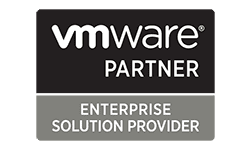Top 25 Networking & Infrastructure Acronyms
Decoding the World of ITSM Related Terms
Carley Kimball, Media Specialist
4 Min Read
In the world of IT (Information Technology), there seems to be an acronym for everything. For those just jumping into the field, it can be a little overwhelming trying to navigate conversations filled with series of letters with unknown meanings.
That’s why we decided to compile thousands of acronyms under the IT umbrella. We plan to break these down further for you, focusing on different topics so that you can easily reference what you’re looking for.
This week, we will highlight the Top 25 Acronyms for Networking & Infrastructure, a branch of GDC’s services that provides our clients with a range of services that focus on upgrading technology to meet the demands of their business.

Here are the Top 25 Acronyms, along with their definitions, that you may run into for Networking & Infrastructure:

DMZ
Demilitarized Zone. A demilitarized zone is a network (physical or logical) used to connect hosts that provide an interface to an untrusted external network – usually the internet – while keeping the internal, private network – usually the corporate network – separated and isolated form the external network.

LAN
Local Area Network. A local area network is a group of computers and peripheral devices that share a common communications line or wireless link to a server within a distinct geographic area. A local area network may serve as few as two or three users in a home office or thousands of users in a corporation’s central office.

WAN
Wide Area Network. Wide area networks are a form of telecommunication networks that can connect devices from multiple locations and across the globe. WANs are the largest and most expansive forms of computer networks available to date.

MDM
Master Data Management or Mobile Device Management.
Master data management is a technology-enabled discipline in which business and information technology work together to ensure the uniformity, accuracy, stewardship, semantic consistency and accountability of the enterprise’s official shared master data assets.
Mobile device management is the administration of mobile devices, such as smartphones, tablet computers, and laptops. MDM is usually implemented with the use of a third-party product that has management features for particular vendors of mobile devices.

VPN
Virtual Private Network. A virtual private network extends a private network across a public network and enables users to send and receive data across shared or public networks as if their computing devices were directly connected to the private network.

MFA
Multi Factor Authentication. Multi-factor authentication is an electronic authentication method in which a user is granted access to a website or application only after successfully presenting two or more pieces of evidence to an authentication mechanism: knowledge, possession, and inherence.

SFTP
SSH File Transfer Protocol. SSH File Transfer Protocol is a network protocol that provides file access, file transfer, and file management over any reliable data stream.

FTP
File Transfer Protocol. The File Transfer Protocol is a standard communication protocol used for the transfer of computer files from a server to a client on a computer network. FTP is built on a client–server model architecture using separate control and data connections between the client and the server.

SSH
Secure Shell. Secure Shell Protocol is a cryptographic network protocol for operating network services securely over an unsecured network. Its most notable applications are remote login and command-line execution. SSH applications are based on a client–server architecture, connecting an SSH client instance with an SSH server.

RDP
Remote Desktop Protocol. The Remote Desktop Protocol (RDP) is a protocol, or technical standard, for using a desktop computer remotely. Remote desktop software can use several different protocols, including RDP, Independent Computing Architecture (ICA), and virtual network computing (VNC), but RDP is the most commonly used protocol.

AOV
Average Order Value. Average order value (AOV) tracks the average dollar amount spent each time a customer places an order on a website or mobile app. To calculate your company’s average order value, simply divide total revenue by the number of orders.

DNS
Domain Name System. The Domain Name System is the hierarchical and decentralized naming system used to identify computers reachable through the Internet or other Internet Protocol networks. The resource records contained in the DNS associate domain names with other forms of information.

DHCP
Dynamic Host Configuration Protocol. The Dynamic Host Configuration Protocol is a network management protocol used on Internet Protocol networks for automatically assigning IP addresses and other communication parameters to devices connected to the network using a client–server architecture.

SFP
Small Form-Factor Pluggable. The small form-factor pluggable is a compact, hot-pluggable network interface module used for both telecommunication and data communications applications. An SFP interface on networking hardware is a modular slot for a media-specific transceiver in order to connect a fiber-optic cable or sometimes a copper cable.

PoE
Power over Ethernet. Power over Ethernet, or PoE, describes any of several standards or ad hoc systems that pass electric power along with data on twisted-pair Ethernet cabling.

NAS
Network Access Server or Network-Attached Storage.
A network access server is any device that handles remote logins to establish a point-to-point protocol connection. Some people call these devices media access gateways or remote access servers.
Network-attached storage is a file-level computer data storage server connected to a computer network providing data access to a heterogeneous group of clients. The term “NAS” can refer to both the technology and systems involved, or a specialized device built for such functionality.

AP
Accounts Payable. Accounts payable is money owed by a business to its suppliers shown as a liability on a company’s balance sheet. It is distinct from notes payable liabilities, which are debts created by formal legal instrument documents.

IT
Information Technology. Information technology is the use of computers to create, process, store, retrieve, and exchange all kinds of electronic data and information. IT is typically used within the context of business operations as opposed to personal or entertainment technologies.

ACL
Access Control List. In computer security, an access-control list is a list of permissions associated with a system resource. An ACL specifies which users or system processes are granted access to objects, as well as what operations are allowed on given objects. Each entry in a typical ACL specifies a subject and an operation.

ARP
Address Resolution Protocol. The Address Resolution Protocol is a communication protocol used for discovering the link layer address, such as a MAC address, associated with a given internet layer address, typically an IPv4 address. This mapping is a critical function in the Internet protocol suite.

CLI
Command Line Interface or Common Language Infrastructure.
A command-line interpreter or command-line processor uses a command-line interface to receive commands from a user in the form of lines of text. This provides a means of setting parameters for the environment, invoking executables and providing information to them as to what actions they are to perform.
Common Language Infrastructure (CLI) is a Microsoft specification for running high-level language program applications in different computer systems without changing the application code. CLI is based on the Microsoft .NET concept that some high-level language programs require modifications due to system hardware and processing constraints.

IDF
Interface Device. An interface device is a hardware component or system of components that allows a human being to interact with a computer, a telephone system, or other electronic information system.

IP
Internet Protocol. The Internet Protocol is the network layer communications protocol in the Internet protocol suite for relaying datagrams across network boundaries. Its routing function enables internetworking, and essentially establishes the Internet.

IPS
In-Plan Switching. In-Plan Switching is a screen technology for liquid-crystal displays. In IPS, a layer of liquid crystals is sandwiched between two glass surfaces. The liquid crystal molecules are aligned parallel to those surfaces in predetermined directions.

ISP
Internet Service Provider. An Internet service provider is an organization that provides services for accessing, using, or participating in the Internet. ISPs can be organized in various forms, such as commercial, community-owned, non-profit, or otherwise privately owned.
To decode more IT-related acronyms and terms, check out our IT Acronyms and Abbreviations Resource or try searching TechTerms.com.




